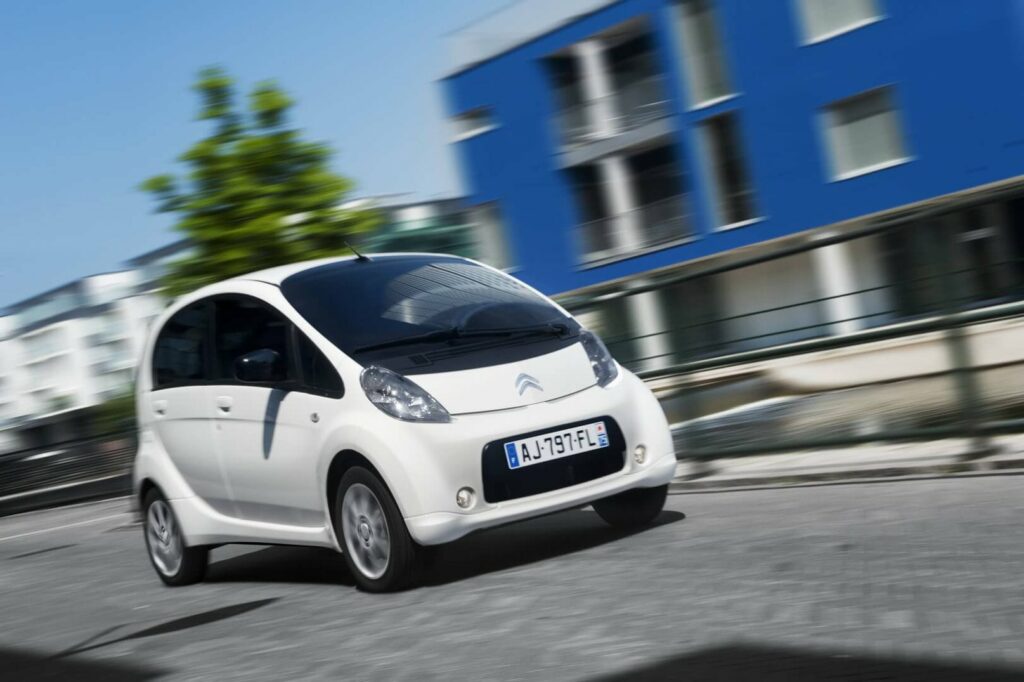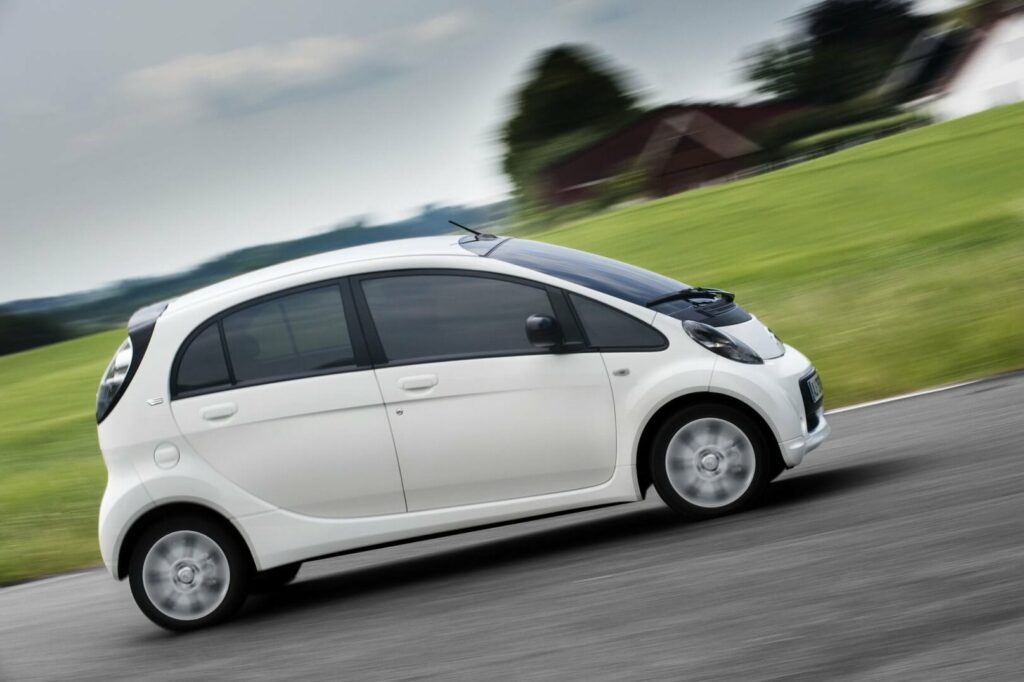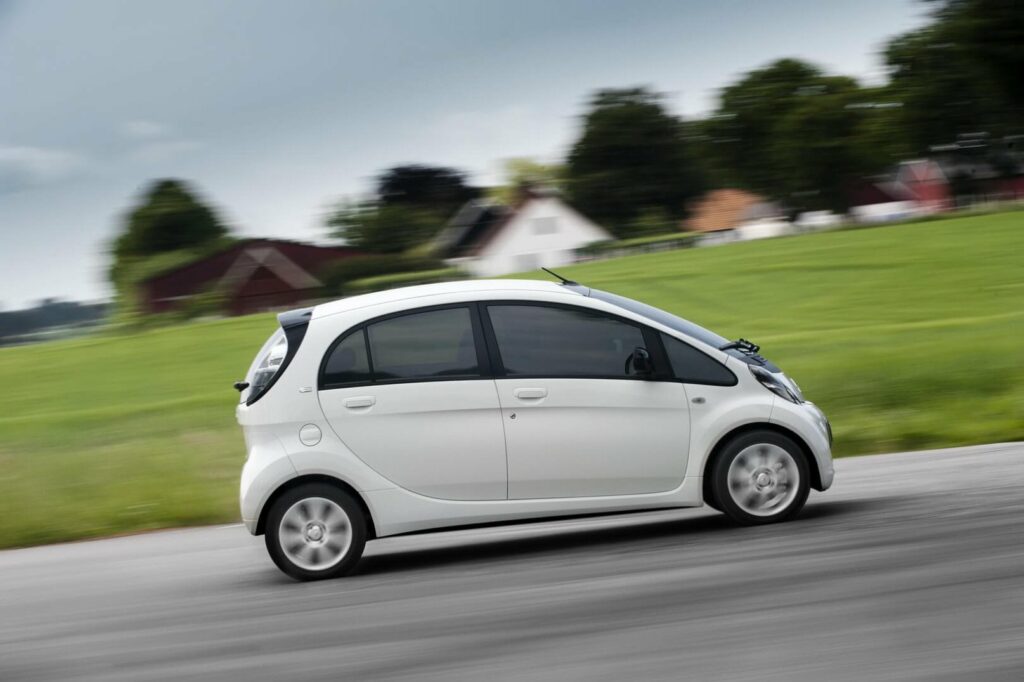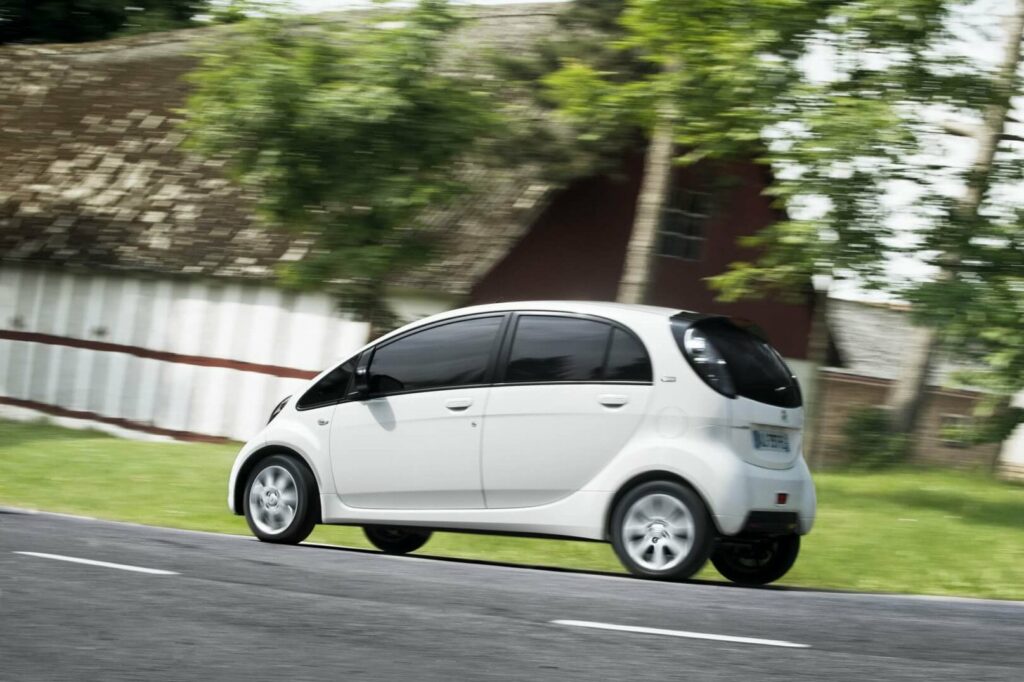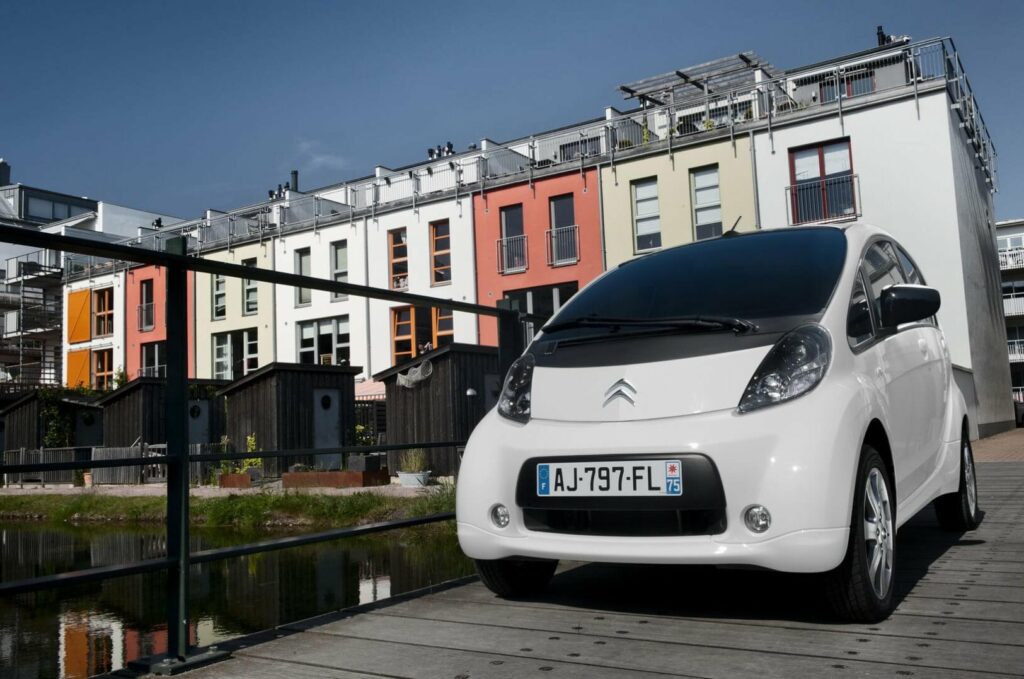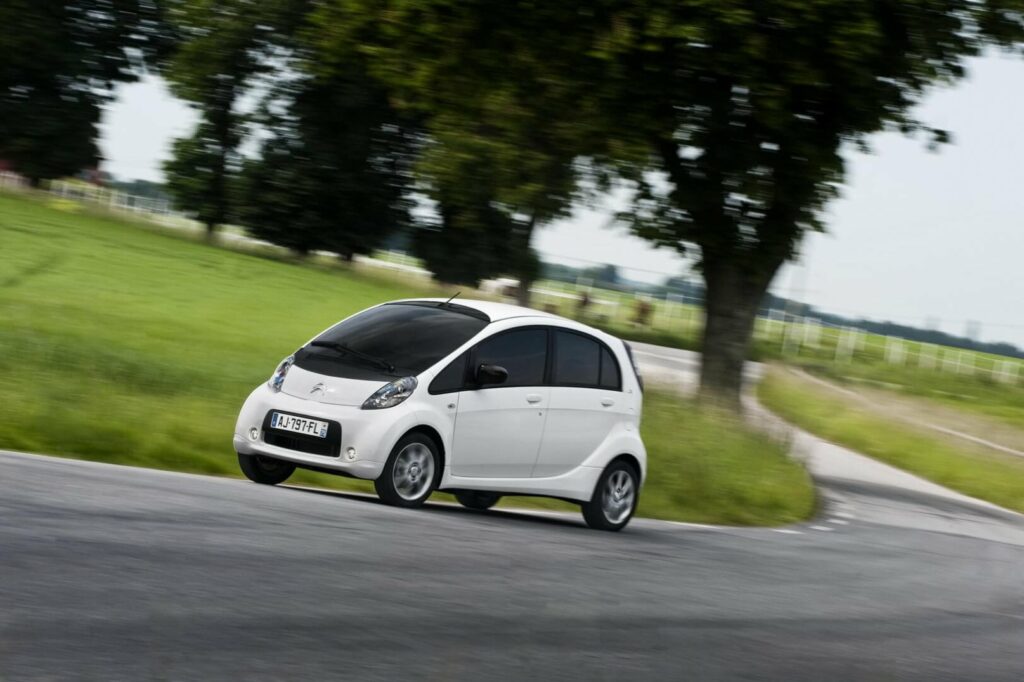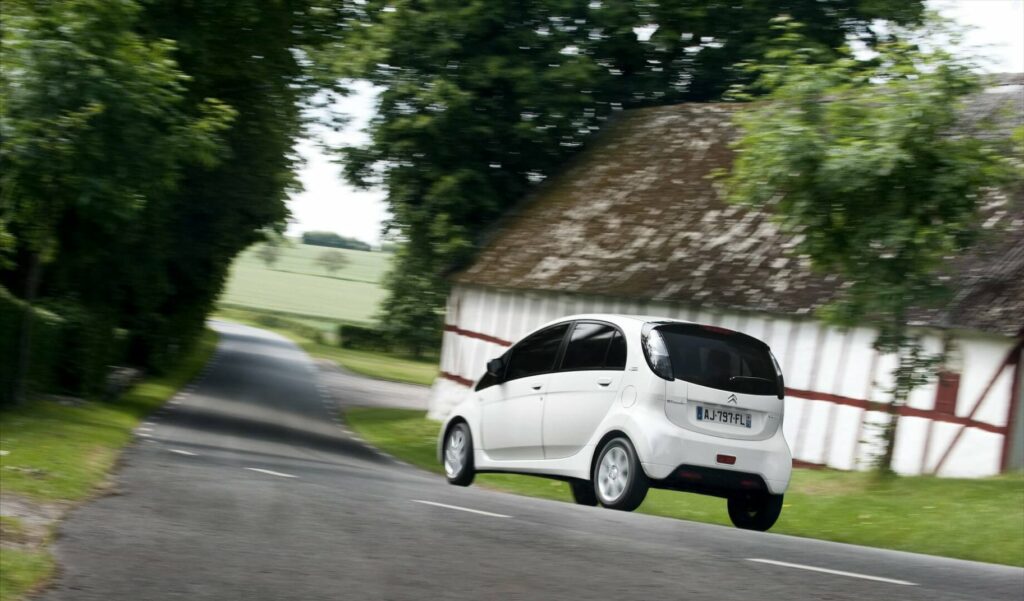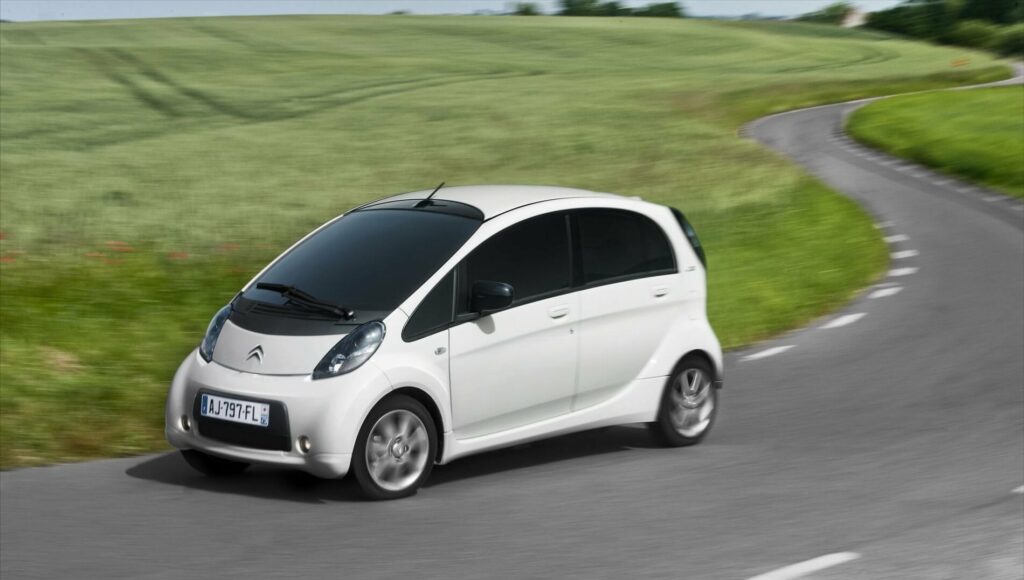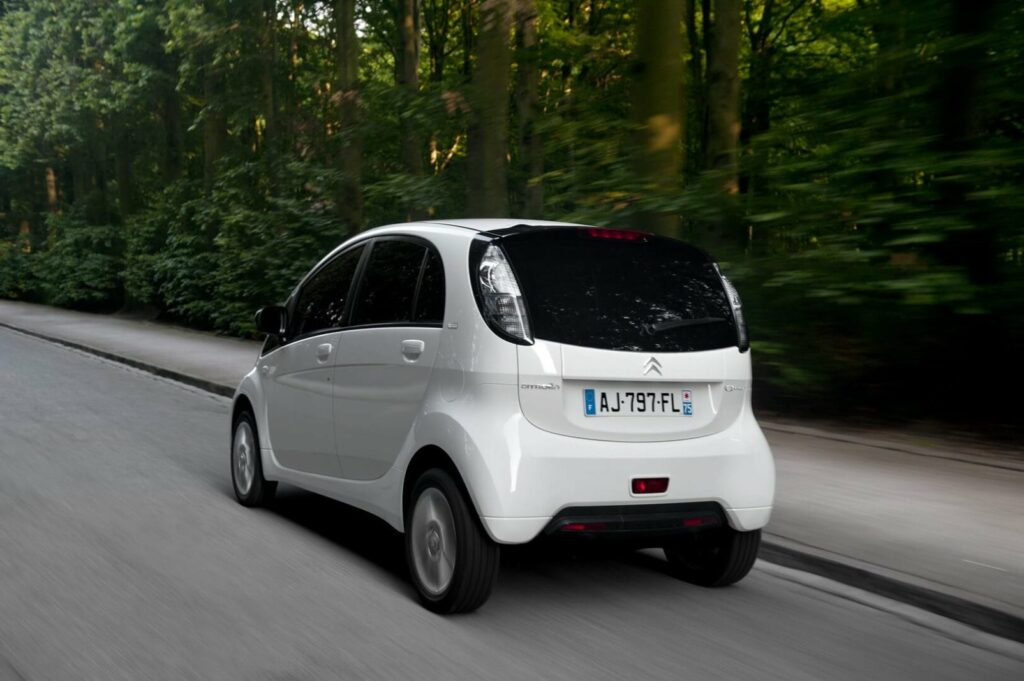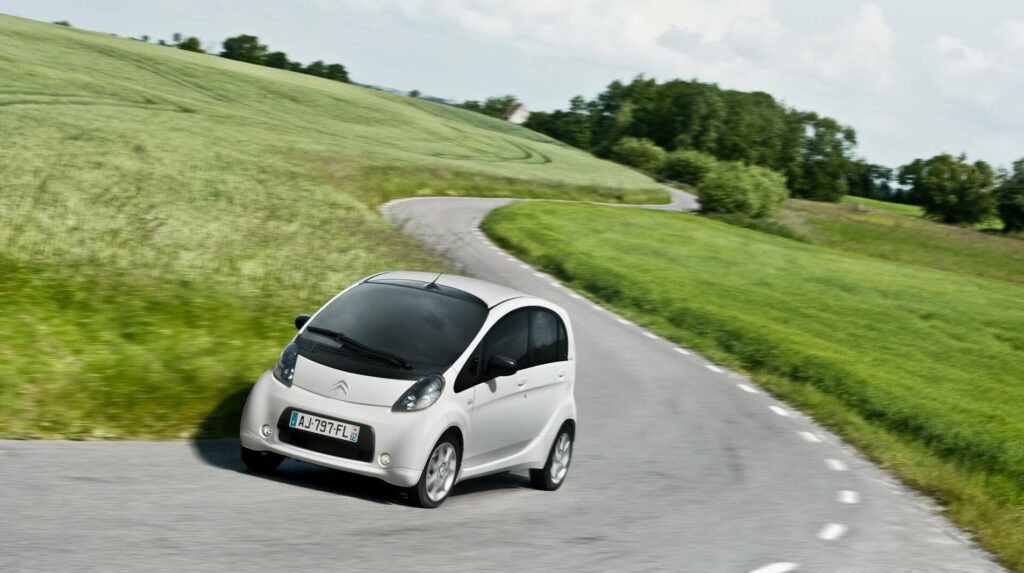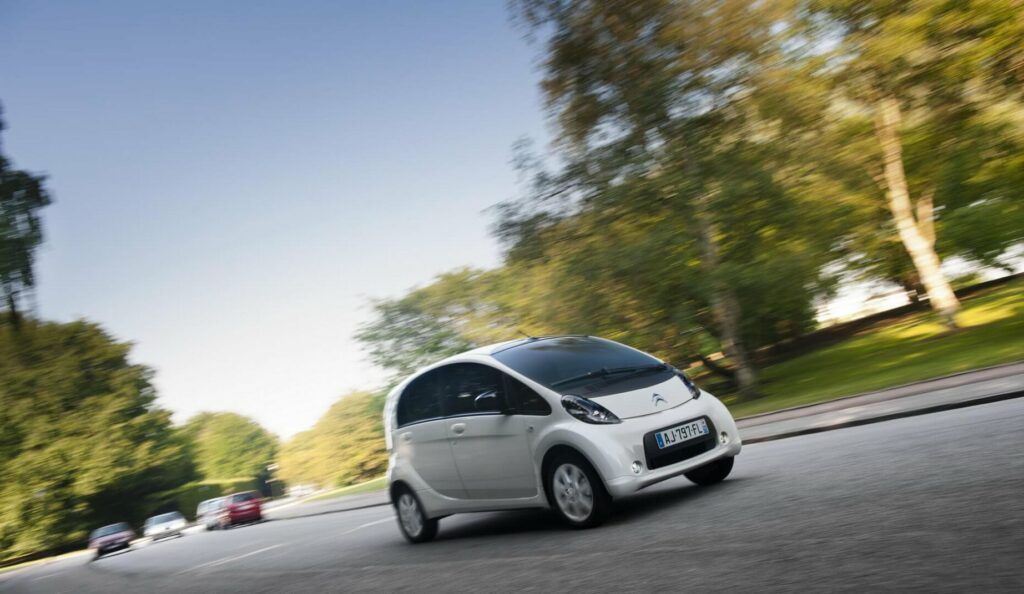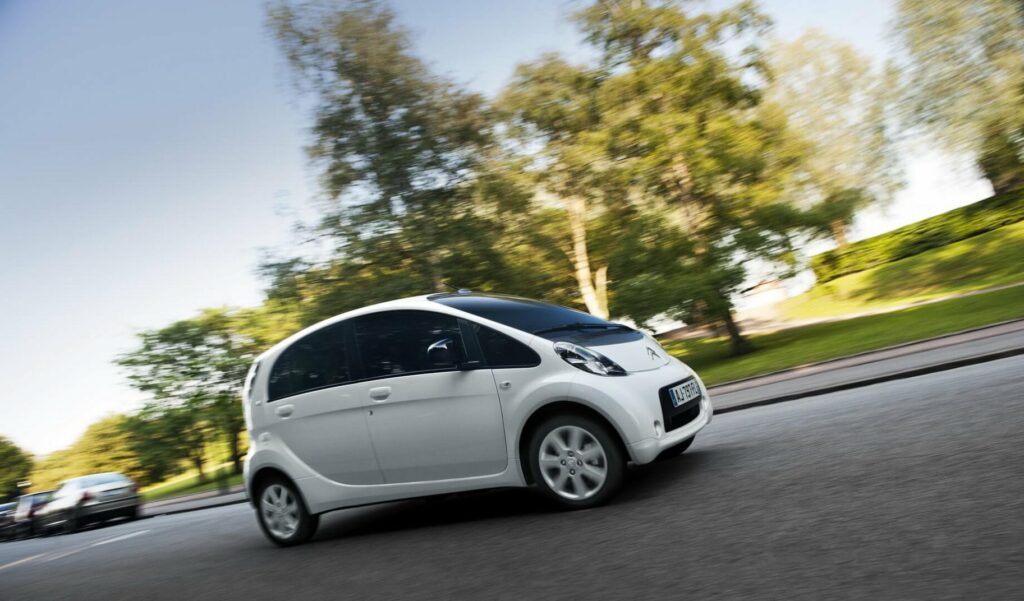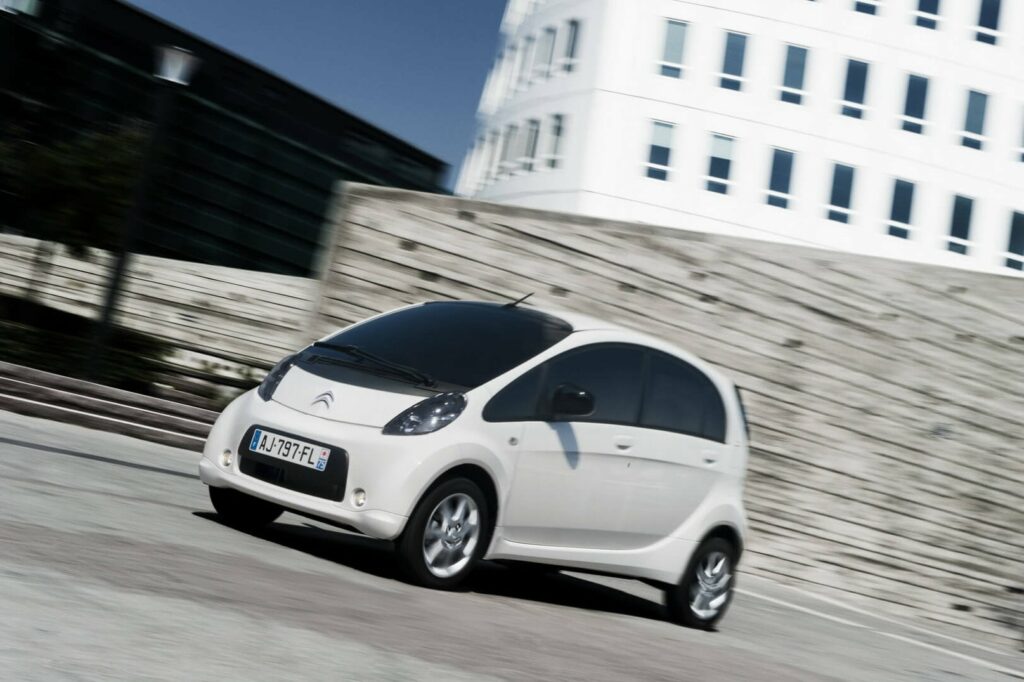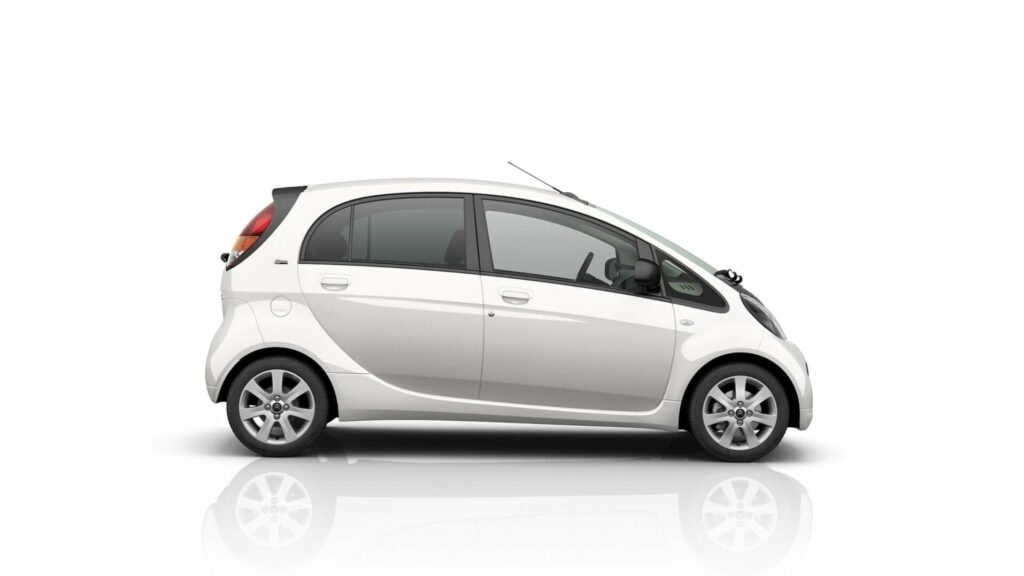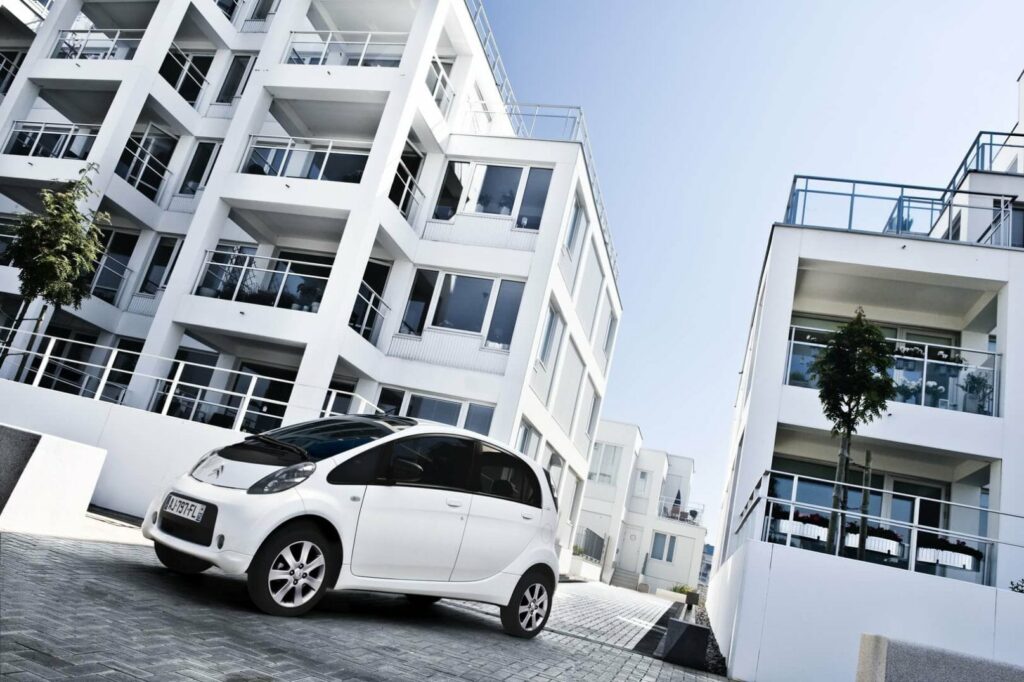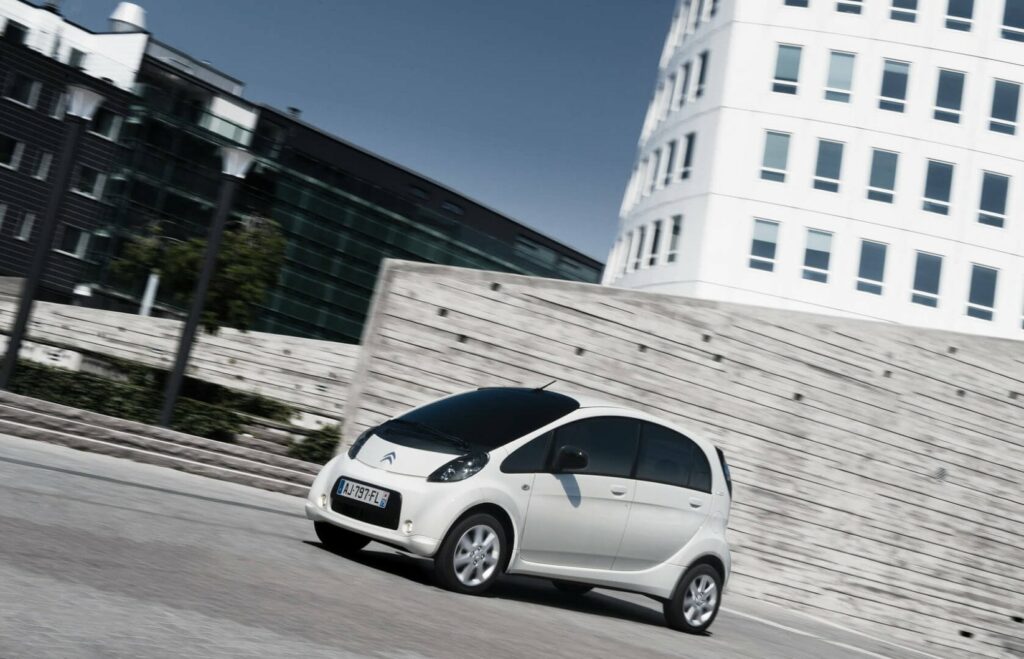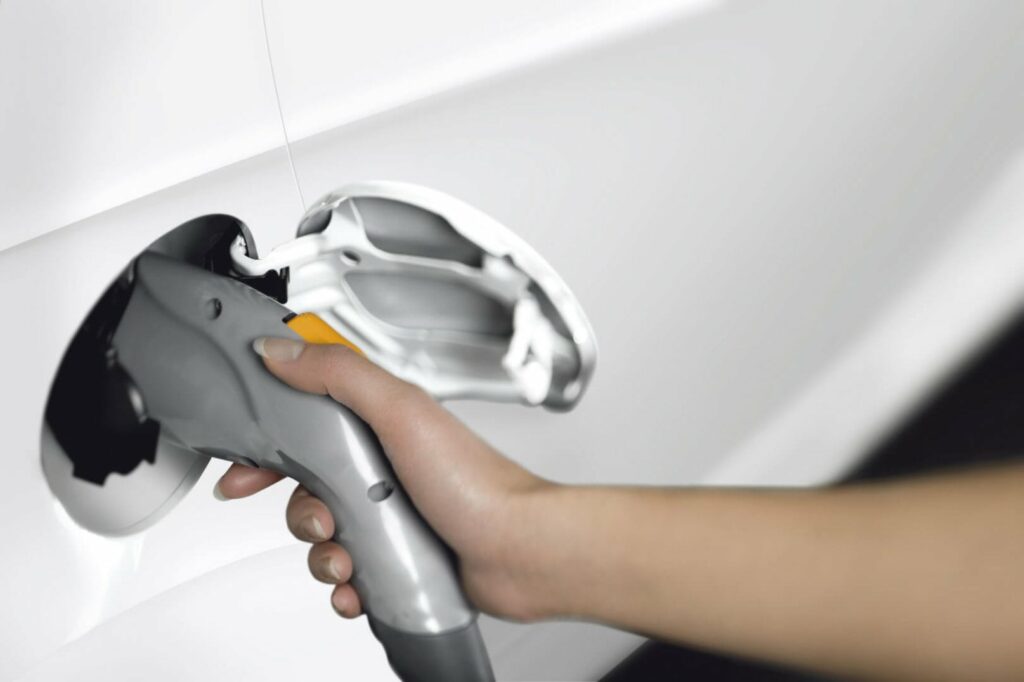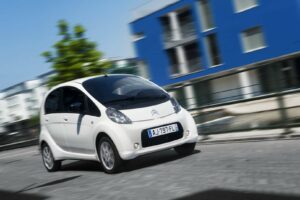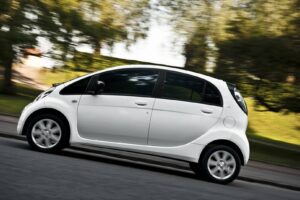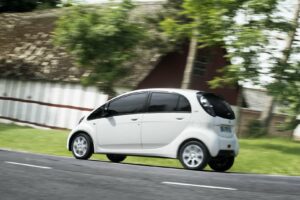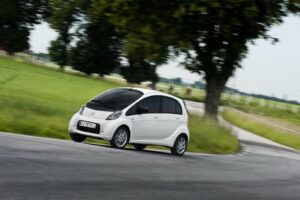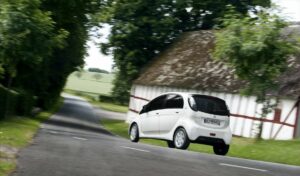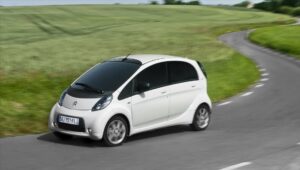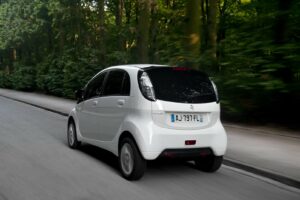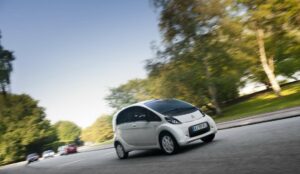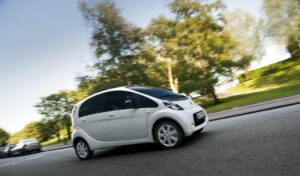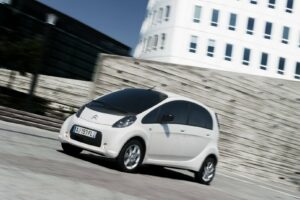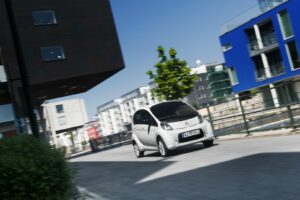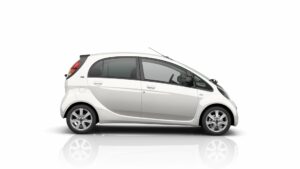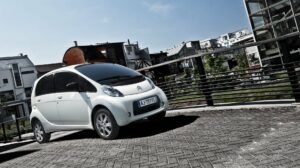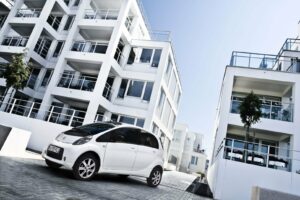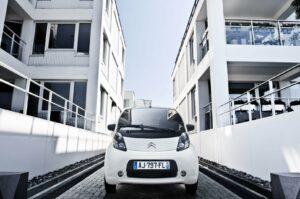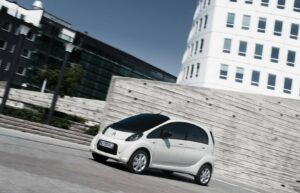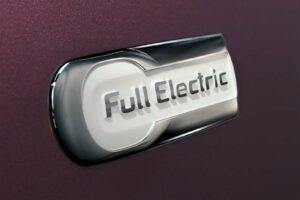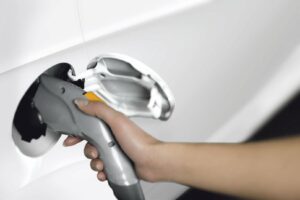Citroen C-Zero
Renowned car manufacturer Citroen has distributed detailed information about its new electric car C-Zero. It is expected that the new electric car from Citroen will be on sale on the European market in 2010. The Citroen C-Zero is a development of joint cooperation with Mitsubishi Motors Corporation. It is necessary to notice that C-Zero is not the first, but already the second electric car of Citroen.
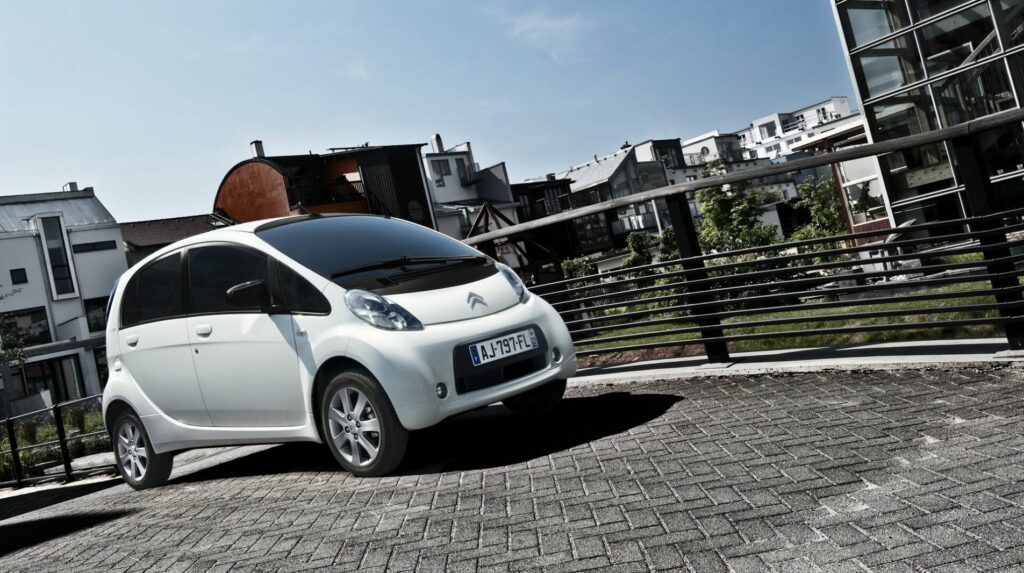
The dynamics of Citroen C-Zero are impressive: maximum speed – 130 km/h, and achievement of the speed of 100 km/h takes 15.9 seconds. Without recharging the electric car can travel up to 85 km. The compact hatchback C-Zero is designed to seat four passengers with all the comfort which a car of this size can be capable of. C-Zero in “Standard” configuration has power steering, EBD, ESP, ABS, electric window lifters, 6 airbags, an air conditioner, Bluetooth, and a Citroen eTouch system. The power of the electric motor C-Zero is 47 kW (i.e., 64 hp) with a speed range from 3,500 to 8,000 rpm. The torque limit is 196 Nm from 0 to 2,000 rpm. The motor is powered by a new generation of lithium-ion batteries. In general, the battery has a useful capacity of 16 kW/h and operates at a voltage of 330 V.
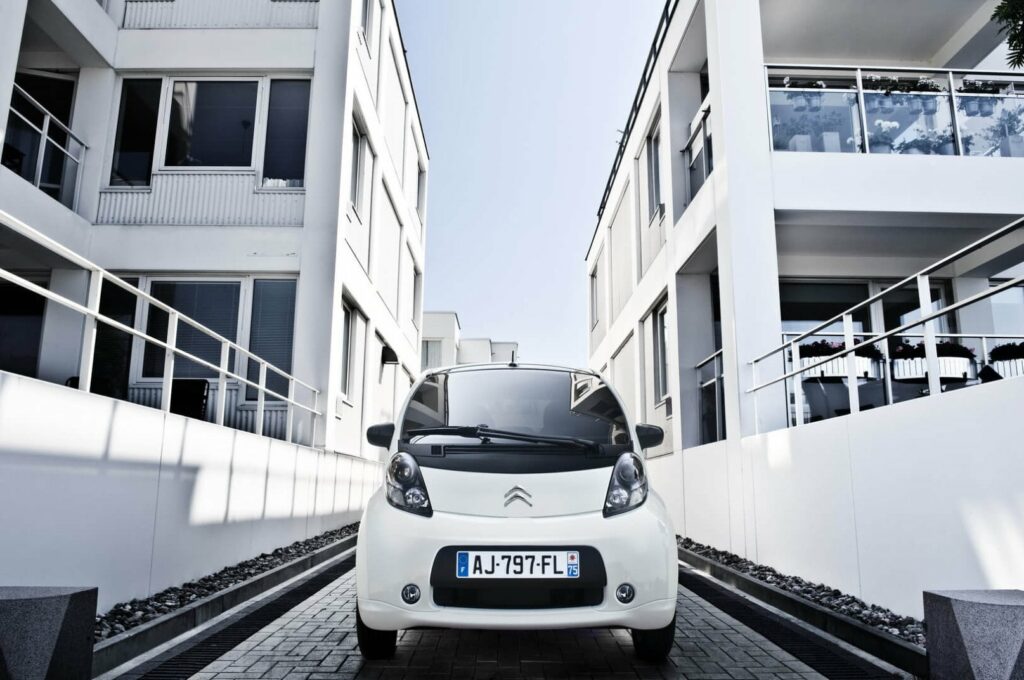
It has long been known that the electric motor has the maximum possible traction immediately after starting the motor, which means that there is no need for a gearbox. Because of this, the Citroen C-Zero electric car has a de multiplier built in a special way and a conventional differential. The units are installed at the rear of the car close to the electric motor. The new electric car is equipped with a system that allows saving energy during braking and deceleration, at this time the battery is recharged. The harder the driver presses the brake pedal, the more energy goes into the battery. Also, the power sources are charged while driving, while the accelerator pedal is depressed. t. The life expectancy of the batteries when fully recharged is 1.5 thousand cycles.
| Performance | |
| Acceleration 0 – 100 km/h | 15.9 sec |
| Top Speed | 130 km/h |
| Electric Range | 85 km |
| Total Power | 47 kW (64 PS) |
| Total Torque | 196 Nm |
| Drive | Rear |
| Battery and Charging | |
| Battery Capacity | 16.0 kWh |
| Battery Useable | 14.5 kWh |
| Europe | |
| Charge Port | Type 1 |
| Port Location | Right Side – Rear |
| Charge Power | 3.7 kW AC |
| Charge Time (0->85 km) | 4h45m |
| Charge Speed | 18 km/h |
| Fastcharge Port | CHAdeMO |
| FC Port Location | Left Side – Rear |
| Fastcharge Power (max) | 40 kW DC |
| Fastcharge Time (9->68 km) | 21 min |
| Fastcharge Speed | 170 km/h |
| Energy Consumption | |
| EVDB Real Range | |
| Range | 85 km |
| Vehicle Consumption | 171 Wh/km |
| CO2 Emissions | 0 g/km |
| Vehicle Fuel Equivalent | 1.9 l/100km |
| NEDC Ratings | |
| Range | 150 km |
| Rated Consumption | 126 Wh/km |
| Vehicle Consumption | 97 Wh/km |
| CO2 Emissions | 0 g/km |
| Rated Fuel Equivalent | 1.4 l/100km |
| Vehicle Fuel Equivalent | 1.1 l/100km |
| WLTP Ratings | |
| Range | 100 km |
| Rated Consumption | 170 Wh/km |
| Vehicle Consumption | 145 Wh/km |
| CO2 Emissions | 0 g/km |
| Rated Fuel Equivalent | 1.9 l/100km |
| Vehicle Fuel Equivalent | 1.6 l/100km |
|
Rated = official figures as published by manufacturer. Rated consumption and fuel equivalency figures include charging losses.
|
|
|
Vehicle = calculated battery energy consumption used by the vehicle for propulsion and on-board systems.
|
|
| Real Energy Consumption between 107 – 242 Wh/km | |
| City – Cold Weather | 161 Wh/km |
| Highway – Cold Weather | 242 Wh/km |
| Combined – Cold Weather | 193 Wh/km |
| City – Mild Weather | 107 Wh/km |
| Highway – Mild Weather | 181 Wh/km |
| Combined – Mild Weather | 145 Wh/km |
|
Energy use for each trip will vary considerably depending on the driver and the conditions. Therefore, we have provided a range of estimates which can be useful in developing an understanding of the potential benefits of this technology. |
|
| Safety Rating | |
| Adult Occupant | 73% |
| Child Occupant | 78% |
| Rating Year | 2011 |
| Vulnerable Road Users | 48% |
| Safety Assist | 86% |
| Dimensions and Weight | |
| Length | 3480 mm |
| Width | 1475 mm |
| Width with mirrors | No Data |
| Height | 1600 mm |
| Wheelbase | 2550 mm |
| Weight Unladen (EU) | 1140 kg |
| Gross Vehicle Weight (GVWR) | 1450 kg |
| Max. Payload | 385 kg |
| Cargo Volume | 166 L |
| Cargo Volume Max | 860 L |
| Cargo Volume Frunk | No Data |
| Roof Load | 0 kg |
| Tow Hitch Possible | No Data |
| Towing Weight Unbraked | 0 kg |
| Towing Weight Braked | 0 kg |
| Vertical Load Max | No Data |
| Miscellaneous | |
| Seats | 4 people |
| Isofix | Yes, 2 seats |
| Turning Circle | 9 m |
| Platform | No Data |
| Car Body | Hatchback |
| Segment | A – Mini |
| Roof Rails | No |
| EV Dedicated Platform | No Data |
Home and Destination Charging (0 -> 100%)
A public charging station is required to use the highest possible charging rate. The EVSE/charging station’s charging capacity affects how long it takes to fully charge the battery. The table below shows all possible options for fully charging the Citroen C-Zero.
In Europe, plugging an electric car into an outlet is often as easy as plugging it into a household outlet, but there are differences from country to country. The table below shows the different ways to charge the Citroen C-Zero, but in some countries some chargers may not be available.
Type 1 (SAE J1772)
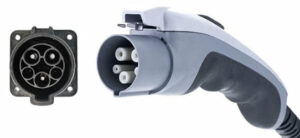
| Charging Point | Max. Power | Power | Time | Rate |
| Wall Plug (2.3 kW) | 230V / 1x10A | 2.3 kW | 7h30m | 11 km/h |
| 1-phase 16A (3.7 kW) | 230V / 1x16A | 3.7 kW | 4h45m | 18 km/h |
| 1-phase 32A (7.4 kW) | 230V / 1x16A | 3.7 kW | 4h45m | 18 km/h |
| 3-phase 16A (11 kW) | 230V / 1x16A | 3.7 kW | 4h45m | 18 km/h |
| 3-phase 32A (22 kW) | 230V / 1x16A | 3.7 kW | 4h45m | 18 km/h |
Fast Charging (10 -> 80%)
If you want to enjoy driving an electric car, one of the most important features to consider is the number of miles per hour the car can travel while charged. This is called the “range” of the car. All electric cars have a certain range, even if they are 100% charged. This is because they do not have an internal combustion engine to lean on if you need to drive a long distance.
Max. Power: The maximum power provided by the charging point
Avg. Power: The average power provided by the charging point during a session of 10% to 80%.
Time: the time it takes to charge from 10% to 80%
Speed: the average charging rate during the session of 10% to 80%
CHAdeMO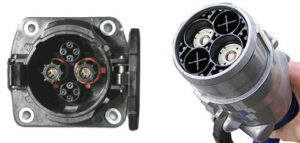
| Charging Point | Max. Power | Avg. Power | Time | Rate |
| CHAdeMO (50 kW DC) | 40 kW | 30 kW | 21 min | 170 km/h |
| CHAdeMO (100 kW DC) | 40 kW | 30 kW | 21 min | 170 km/h |
| Brand | Citroen |
| Model | C-Zero |
| Body Style | Hatchback |
| Car Engine | electric |
| Motor power | 47 |
| Maximum Torque, Nm | 196 |
| Battery Energy, kWh | 16.0 |
| Power reserve (NEDC/EPA/WLTP), km | - / - / 85 |
| Level Charging (230/400/DC), hours | - / - / 0.21 |
| Electrical Acceleration, 0-100 km/h (0-62.1 mph) in sec | 15.9 |
| Top Speed, km/h | 130 |
